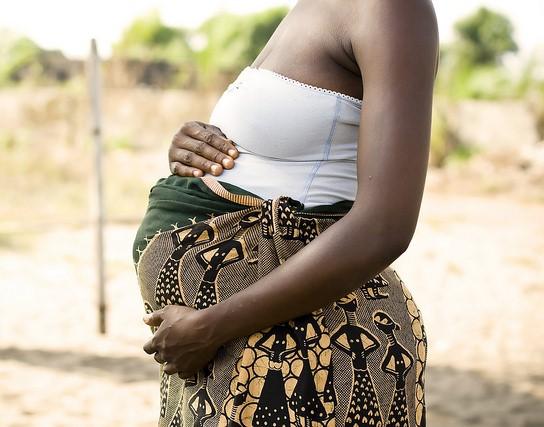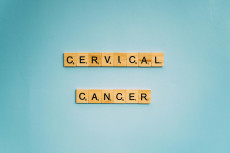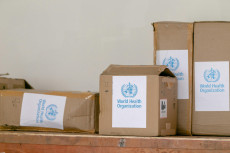- According to the Kenya Demographic Health Survey report, in 2023, Homa Bay registered 29 maternal deaths, with Homa Bay County Teaching and Referral Hospital registering 13 deaths that year.
Maternal mortality, a haunting reality in many parts of the world, echoes with the silent urgency of unfulfilled potential and shattered dreams.
Beyond statistics lies the profound tragedy of lives lost in the sacred journey of childbirth. Each number represents a story of resilience and struggle, a life that began with hope yet ended in sorrow.
As per a report by the World Health Organization in March 2023, globally, a woman dies of pregnancy emergency-related causes every two minutes. In 2020, the maternal mortality rate in Africa was 531 deaths per 100,000 live births.
Africa accounted for 69% of global maternal deaths in 2020, with major complications accounting for 75% of all maternal deaths caused by severe haemorrhage infection, eclampsia, preeclampsia and unsafe abortions.
In 2020, Kenya faced a high maternal mortality rate of 530 deaths per 100,000 live births; this was above the global average rate of 223 deaths per 100,000 live births.
Read More
Following Sustainable Development Goal 3, States committed to minimising the maternal mortality ratio to less than 70 per 100,000 live births by 2030.
However, maternal death rates continue to pose a significant challenge to the attainment of Vision 2030, with Kenya registering a 55% increase in mortality rates between 2017 and 2020.
According to the Kenya Demographic Health Survey report, in 2023, Homa Bay registered 29 maternal deaths, with Homa Bay County Teaching and Referral Hospital registering 13 deaths that year.
According to Roselyn Omollo, the County Executive Committee Member for Health, Homa Bay registers between 310 to 380 deliveries every month with an average of 27 deliveries done every day, which leads to the rising numbers of maternal mortality.
“Increasing number of deliveries increases our chances of maternal deaths, we have between 310 to 380 recorded deliveries per month with 27 deliveries done at the county referral hospital while the nurse to mother ratio is worrying because we are short of nurses,” said the CECM for health.
The nightmare of losing a wife still haunts Eric Barasa, a father of 2 whose marital life was axed by the brutality of maternal morality that left him a widower, a mother and a father to his two children.
Eric recalls the fateful morning that shaped his life for the worse, a cold, chilly morning that prompted him to take his wife for delivery, not knowing he would come back with his wife and son in a casket.
“My wife’s water broke and she started bleeding at 6 am on the twelfth day of July 2022, that morning I rushed my wife to the Homa Bay Teaching and referral Hospital where she was admitted in preparation for delivery,” Eric said.
Eric said the nurse in charge did a few vaginal examination tests on his wife as they waited for the delivery time; he was informed that the vagina had not dilated enough to push through a child.
“At around 7 in the morning the nurse in charge told us to wait as my wife’s dilation had only reached 6cm, so we waited up to around 3pm when I rushed home to check on the kids and prepare dinner for my wife,” Eric said.
On his return to the hospital, Eric missed his wife at the waiting bed where he earlier left her; in that shock, he started panicking only to be told that his wife was in labour already.
“At 8 pm I went back to the hospital only to find out that my wife was already in the delivery room but in was not informed, so I rushed to see if she was okay, upon reaching there the nurse denied me entrance that was when I knew something was wrong,” said Eric.
For some time, Eric paced up and down out of worry without any answers to the questions he had about his wife’s condition; hearing his wife wailing made the situation dire, and he could not withstand his labour pains.
“I heard my wife scream twice and went silent for a few minutes, at first I thought she had already delivered but not hearing my son cry made me worried, that is when the nurse came and informed me that my wife has not been responding to her labor but they were doing all things possible to save her life. They later told me my wife and child had passed on,” Eric lamented.
According to Eric, his wife was not given the utmost health care that she needed for safe delivery, from him not being informed that his wife was taken for delivery to the way his wife screamed in the maternity.
“I do not think my wife was given proper medical attention that she deserved, I believe if cesarean section was an option in my wife’s case then my wife and child would have been saved,” lamented Eric.
Maternal haemorrhage during pregnancy, childbirth or even the postpartum period is the major cause of maternal mortality, according to Dr Ondigo, who is an Obstetric Gynecologist at the Homa Bay Teaching and Referral Hospital.
“Hemorrhage is a leading cause of death among pregnant women and new mothers. It is often cause by uterine atony (failure of uterus to contract after delivery), placental abnormalities, trauma or even coagulation disorders,” said Dr Ondigo.
Haemorrhage can be prevented by proper antenatal care to detect and manage underlying conditions, trained health provider present during childbirth and access to emergency obstetric care.
Upon haemorrhage, prompt recognition, assessment of the cause and immediate intervention that might include uterine massage, administration of medicine to promote uterine contractions, uterine artery ligation or hysterectomy are done in severe cases and blood transfusion as needed.
The gynaecologist also said that maternal sepsis is another cause of maternal death. According to the World Health Organization, it is ranked third most common cause of maternal death after childbirth.
Sepsis is a potentially fatal condition that arises when the body's response to infections causes injury to its tissues and organs during pregnancy, childbirth, post-abortion or even the postpartum period, leading to multiple organ failure and death.
“Sepsis or infections is common in maternity, and only when not detected and treated then it can lead to death. Its warning signs are detected during pregnancy, six weeks post natal, during birth and abortion,” the gynaecologist said.
Dr Ondigo said that obstructed labour poses a threat to the mother and fetus. Typically, obstetric labour involves rhythmic contractions of the uterine muscles, which help push the baby. Still, when the baby’s passage through the birth canal is hindered, then death becomes a result.
“Maternal factors like pelvic dystocia (narrow or abnormally shaped pelvis), previous pelvic trauma, soft tissue obstruction (fibroids or tissues in the birth canal) and fetal factors like macrosomia (excessive fetal growth), baby presenting in a breach or transverse position and fatal malformations can lead to morbidity and mortality,” said the gynaecologist.
Obstructed labour leads to prolonged labour that causes exhaustion, dehydration, postpartum haemorrhage and uterine rapture from continuous pressure from the baby’s head, which causes the uterus to tear.
Obstructed labour also causes fetal distress indicated by abnormal fetal heart rate patterns, and birth trauma such as shoulder dystocia and brachial plexus; it can lead to fetal death in severe cases.
High blood pressure disorders in pregnancy are major contributors to maternal mortality. Dr Ondigo highlighted that preeclampsia and eclampsia can lead to seizures or organ damage (kidneys, liver, brain, cardiovascular system) due to high blood pressure.
Primary types of hypertensive disorder include gestational hypertension, where the woman develops elevated blood pressure after a period of 20 weeks of gestation without the presence of proteinuria.
Preeclampsia is characterized by high blood pressure and high proteinuria (protein in urine). We have preeclampsia superimposed chronic hypertension brought by preeclampsia due to preexisting chronic hypertension.
In the efforts towards combating the worrying maternal mortality in Homa Bay County, the Department of Health included restocking its blood bank to cater for patients who suffer maternal haemorrhage.
During the interview, the Chief Officer for Health, Dr. Kevin Osuri, affirmed that the county has a reliable blood bank for emergency blood transfusions.
“Hemorrhage is our biggest challenge when it comes to maternal deaths and to curb cases where our mothers die of hemorrhage, we stationed a functional, ready and reliable blood bank for emergencies,” affirmed Dr Osuri.
Homa Bay being one of the counties registering high numbers of maternal deaths, Dr Osuri highlighted that the county had introduced emergency obstetric care in the local health facilities, aiming to reduce the distance between mothers and hospitals.
“In every local health facilities we have introduced emergency obstetric care and basic obstetric care units so that any mother anywhere within the county can access professional healthcare for safe deliveries,” Dr. Osuri said.
The imperative to reduce maternal deaths transcends statistics; it speaks to the heart of humanity’s commitment to ensure every life begins and thrives safely.
Through advocacy, education, empowering women with knowledge and resources, addressing systematic barriers and equitable access to healthcare, we can rewrite the narrative of maternal healthcare.
Every preventable death represents a call to action, urging us to prioritize maternal health and forge a future where every woman can experience childbirth safely and with dignity.
Let our collective efforts not wane until every mother can celebrate the miracle of childbirth without fear, knowing that our unwavering progress and compassion safeguard her life and her children's lives.
Together, we can transform this vision into a reality in which maternal mortality becomes a tragic chapter of the past, and every birth is a triumph of hope and love.




-1767174925-md.jpg)





-1767174925-sm.jpg)

